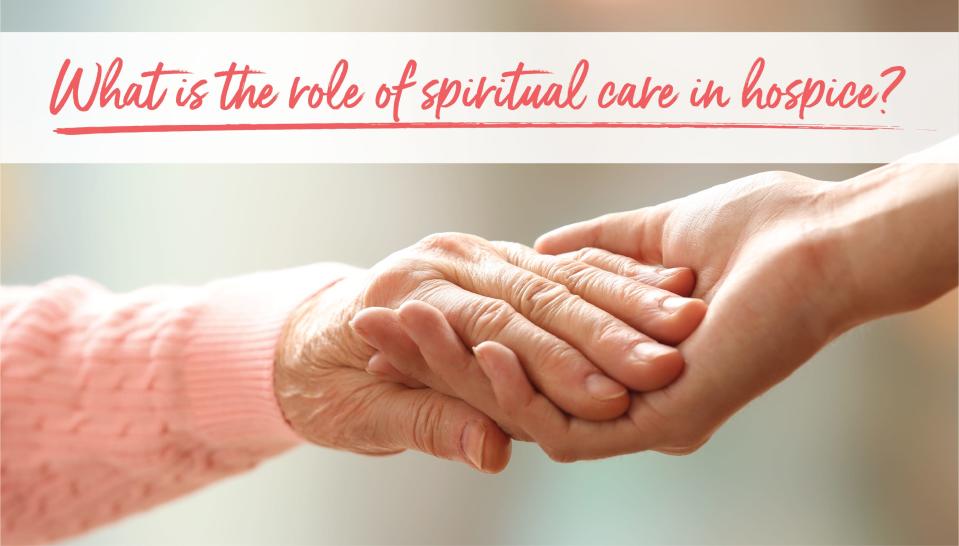What you should know about hospice care and the aim to maintain dignity and quality of life
- Oops!Something went wrong.Please try again later.

A week ago, former President Jimmy Carter, who at age 98 is the longest-living American president, said in a statement from the Carter Center that he’ll spend his remaining days at home and receive “hospice care instead of additional medical intervention.” The news brought the concept of hospice to the spotlight again. Similarly, this happened in April 2018, when former First Lady Barbara Bush announced her decision “not to seek additional medical treatment and will instead focus on comfort care,” just days before her death at age 92. What’s “hospice care” or “comfort care,” and would those also be viable options for other people at the end of life?
We’ve written about this topic before. Hospice, comfort care, and the broader discipline of palliative care, all aim to take care of the whole patient, not just the disease process or length of survival. Choosing these types of care doesn’t mean giving up or forgoing modern medicine altogether. The goal is to maintain patient dignity and improve their quality of life.
Hospice is a system of care for terminally ill patients with less than six months of life expectancy. Dementia is the most common diagnosis, followed by heart failure, advanced cancer, lung disease and stroke. The number of hospice patients has steadily increased over the years, signaling greater public acceptance. According to the National Hospice and Palliative Care Organization, more than 1.7 million patients received hospice services in 2020.
Like President Carter, most hospice patients receive services at the place they call home, which may be a private residence, a nursing home, or an assisted living facility. Typically, the patient’s family serves as the primary caregiver and the hospice team makes regular visits to assess the patient, administer medications and therapy, and provide support. The hospice team includes doctors, nurses, aids, therapists, social workers, and spiritual counselors. They’re on-call 24/7 to respond to the patient’s needs.
More:Here's what to do when your health insurance requires prior authorization for a treatment
Hospice services can also be provided at a stand-alone facility or a specialized hospital wing. Inpatient care is needed when pain or other symptoms become too difficult to manage at home, when the regular caregiver needs respite, or when the patient becomes hospice status during hospitalization and is too sick to be moved.

Acknowledging that their condition is incurable, hospice patients focus on comfort. Medicines are used to relieve pain, control nausea, decrease anxiety, ease breathing, and treat excessive mucus and saliva. Patients can still be treated for short-term illnesses. For example, a hospice patient with cancer won’t receive chemotherapy but will likely agree to antibiotics to overcome a bout of pneumonia.
Many hospice patients also have orders for Do Not Resuscitate / Do Not Intubate, even Do Not Hospitalize, as they want to be allowed to die peacefully at home. Likewise, they often refuse invasive life-sustaining measures including mechanical ventilation and artificial nutrition. However, there’s no default and each patient’s wishes should be clarified separately.
Three-quarters of hospice patients are older than 65 and covered by Medicare Part A, which spent $22.4 billion on hospice care in 2020. Medicaid, and most commercial insurances, also offer up to six months of hospice benefits. The caveat is that once a patient becomes hospice status, every aspect of their care must be arranged by the hospice team to qualify for insurance coverage. With half of patients dying within 18 days of enrolling in hospice, there’s room for improvement – including providers knowing patients’ wishes and identifying eligible patients early, as well as patients and families being more educated about their options.
Choosing hospice can help prevent futile interventions that bring more harm than good. It can be tremendously rewarding for the patient and family to be together during the last stretch of life. However, it can also be physically and emotionally exhausting for the family members tasked with the day-to-day caregiving, even with help from the hospice team. Another important benefit of hospice is bereavement support for the family after the patient’s death. Lastly, the patient and family can revoke the decision and leave hospice care at any time if they want to pursue active treatment again or if they’re no longer considered terminally ill.
Qing Yang and Kevin Parker are a married couple living in Springfield. Dr. Yang is an anesthesiologist. She received her medical degree from Yale School of Medicine and completed residency training at Massachusetts General Hospital. Parker has helped formulate and administer public policy at various city, state, and federal government entities, including the Illinois Department of Innovation and Technology and the Illinois Emergency Management Agency. This column is not intended to substitute for professional medical advice, diagnosis or treatment. The opinions are those of the writers and do not represent the views of their employers.
This article originally appeared on State Journal-Register: What is hospice care and how does it work for patients and caregivers

